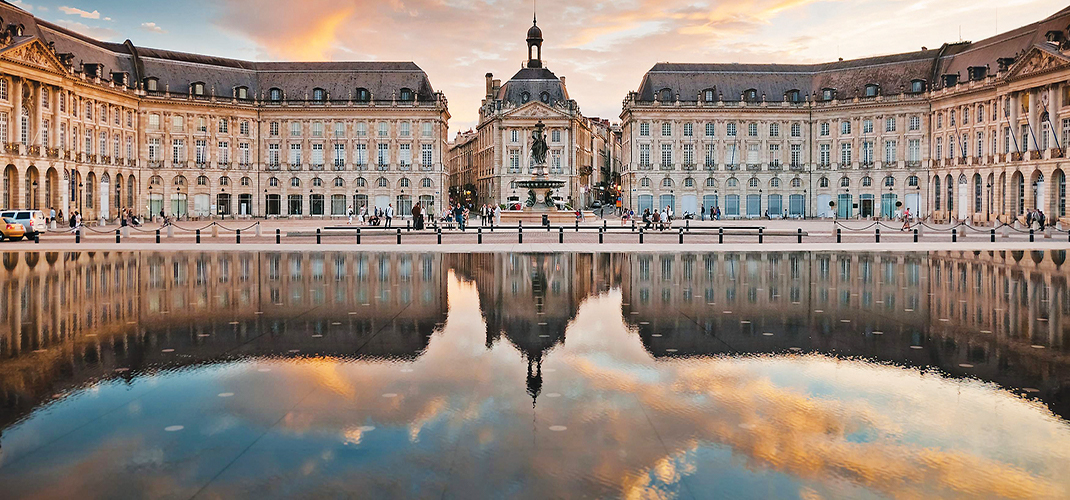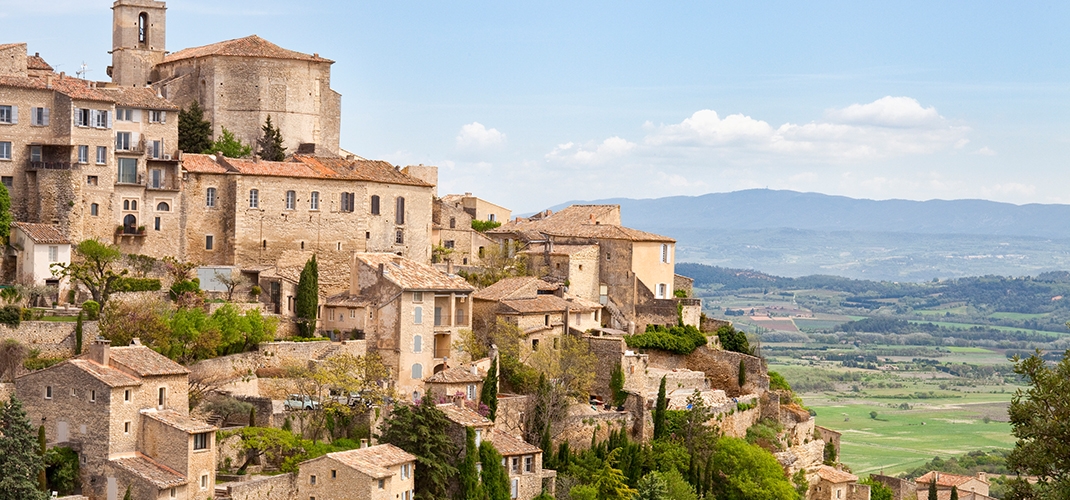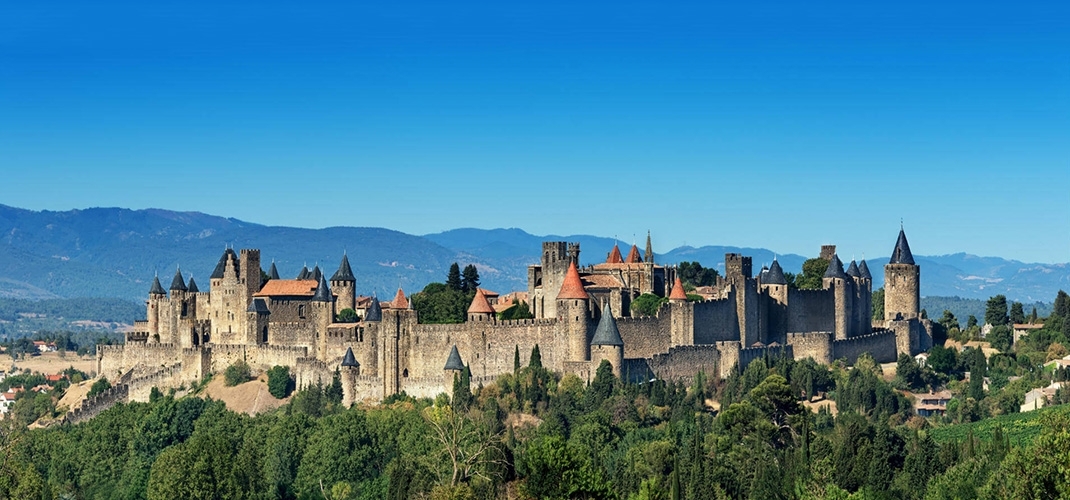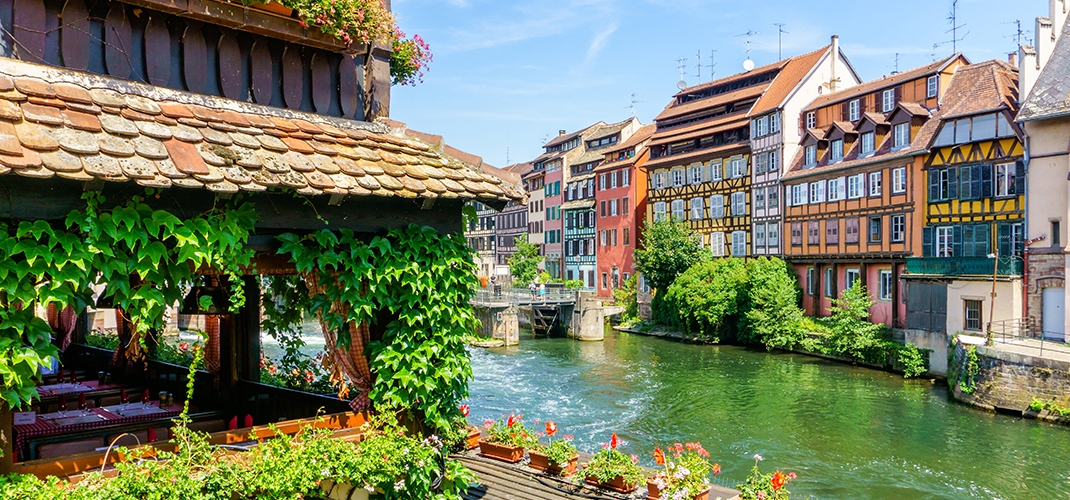Bordeaux

Bordeaux is the heart of the world famous wine growing region, sits along the Garonne River in southwestern France. Known for its Gothic Cathédrale Saint-André, 18th-19th Century mansions, art museums such as the Musée des Beaux-Arts de Bordeaux and public gardens that line the curving river quays. The Grand Place de la Bourse, positioned on the Three Graces Fountain, overlooks the Miroir d’Eau reflecting pool. The Cité du Vin, a 21st Century architectural demonstration reminds everyone of what wine means to this city and the rest of the world. With the UNESCO Listed Old City, 18th Century quays and squares Bordeaux is definitely a must on any visit to France.
When the Place de la Bourse broke free of its Old Town walls, this magnificent square sitting on the left bank of the Garonne was built in the 1720’s. Designed by Jacques Gabriel who was Louis XV’s favourite architect, the square has now become the symbol of the city. When you get up close you can see the mascarons, the sculpted faces beneath the arches of the buildings. Cross the road to the Miroir d'Eau (Water Mirror), created by the landscape artist Michel Corajoud with its large pool and shallow film of water, which sometimes is cloaked by mist and reflects the Place de la Bourse.
The left bank of the Garonne is one of the world’s most splendid waterfronts. Part of that 18th Century World Heritage Ensemble, where the majestic façades of grand Neoclassical buildings line the Riverside Promenade. The Garonne is spanned by the many arches of the Pont de Pierre.
For a celebration of all things wine, a visit to La Cité du Vin, the ultra-modern cultural centre is a must. This high-tech museum that is shaped like wine swirling in a glass and split over 10 levels will teach you about the history of wine and where and how it is made around the world. The architecture of this 3,000 square metre building with its 55 metre tower, is dazzling and your tour will finish with a visit to the Belvedere bar where you can pair a glass of wine while enjoying the spectacular views over Bordeaux and the Garonne.
As with many religious buildings around France, Cathédrale Saint-André had a tough time in the Revolution, when it was stripped of its décor. The grandeur of this medieval Gothic architecture and the historical significance of this site happened when in 1137 Eleanor of Aquitaine and the future Louis VII wed, at only 13 and 17 years respectively. The north portal, which was built as a Royal entrance in the 13th Century, has a tympanum with images from scenes like the last supper. The neighbouring Tour Pey Berland Bell Tower is yet another way to see this city once you have climbed the 282 steps to the top!
The Musée des Beaux-Arts de Bordeaux (Bordeaux Museum of Fine Arts) was built in 1881 and is housed in a dependency of the Palais Rohan in central Bordeaux. The museum displays collections by some of Europe's greatest painters as well as drawings and sculptures from the 15th-20th Centuries.
Running from the Grand Théâtre in the north down to the Place de la Victoire, Rue Sainte-Catherine is the longest pedestrianised shopping street in Europe. This vibrant street hums with excitement at all hours. It is where you can enjoy a massive shopping trip or relax in any number of cafés and restaurants. The sales are normally held every February and July and where you will also find temporary stalls set up on the street as well.
At the centre of the Place de la Victoire is a curious piece of modern public art designed by the France based Czech sculptor Ivan Theimer. The artwork is made of marble blocks from the Languedoc region, forming a column 16 metres tall. There are also two tortoises designed by Theimer at the foot of the pillar, popular with children.
Built in 1780 by the architect Victor Louis, the Grand Théâtre is regarded as his masterpiece. Even if you have no reason to go inside come to the Place de la Comédie after dark and marvel at the site of the portico and the 12 statues of muses and goddesses in lights. The interior is lavishly decorated in blue and gold, the colours of the French Monarchy, which were removed after the revolution. A great way to experience this building is to enjoy a performance by the Bordeaux National Opera.
La Grosse Cloche was built in the 15th Century, with its twin conical roofs and is the Old Belfry for Bordeaux’ Town Hall. It is one of only a handful of fragments that still remain from the city’s medieval period and is built on the remnants of the 13th Century Porte Saint-Éloy, a former gate in the old ramparts. The Grosse Cloche is silent for most of the year, except for the big public celebrations like Bastille Day.
The Bordelaise cuisine is rich and sophisticated having its own authentic identity within France. There is one local delicacy that should be tried when in Bordeaux. Canelés are a small pastry baked in a scalloped mould with vanilla, rum and sugar with a soft and tender custard centre and a thick caramelised crust that are traditionally eaten as a dessert after a meal.
No stay in Bordeaux is complete without taking a guided tour around the neighbouring world famous vineyards of Saint-Émilion, The Médoc, Sauternes, Graves and Canon Fronsac. Here you will be escorted around the vat rooms and cellars, learn how wine is made and stored and then get the chance to try some for yourself. Through the summer months, tasting sessions are often held outside in the various beautiful Châteaux grounds. The town of Saint-Émilion sparkles with its old stone streets, ruins and Romanesque Churches.





